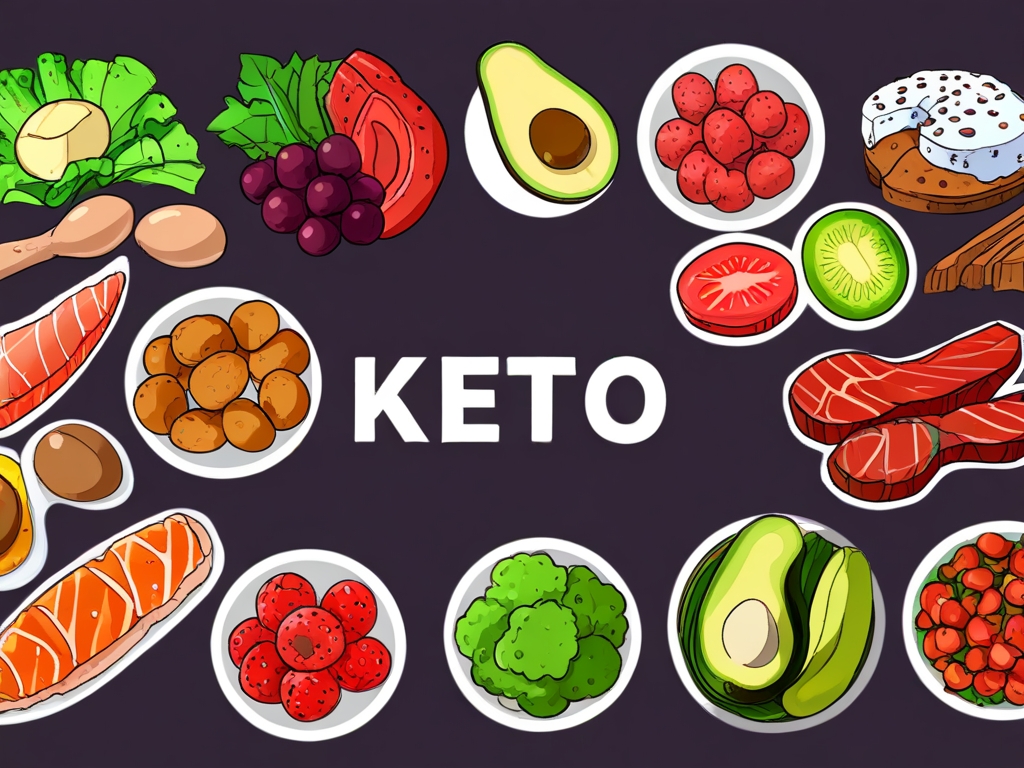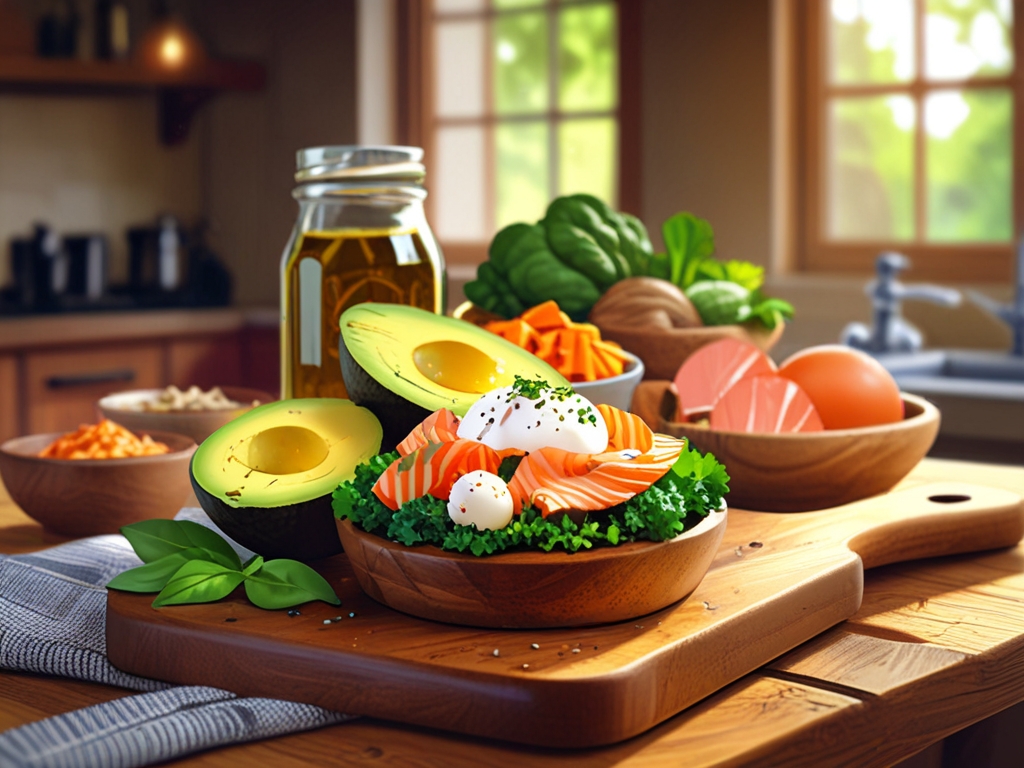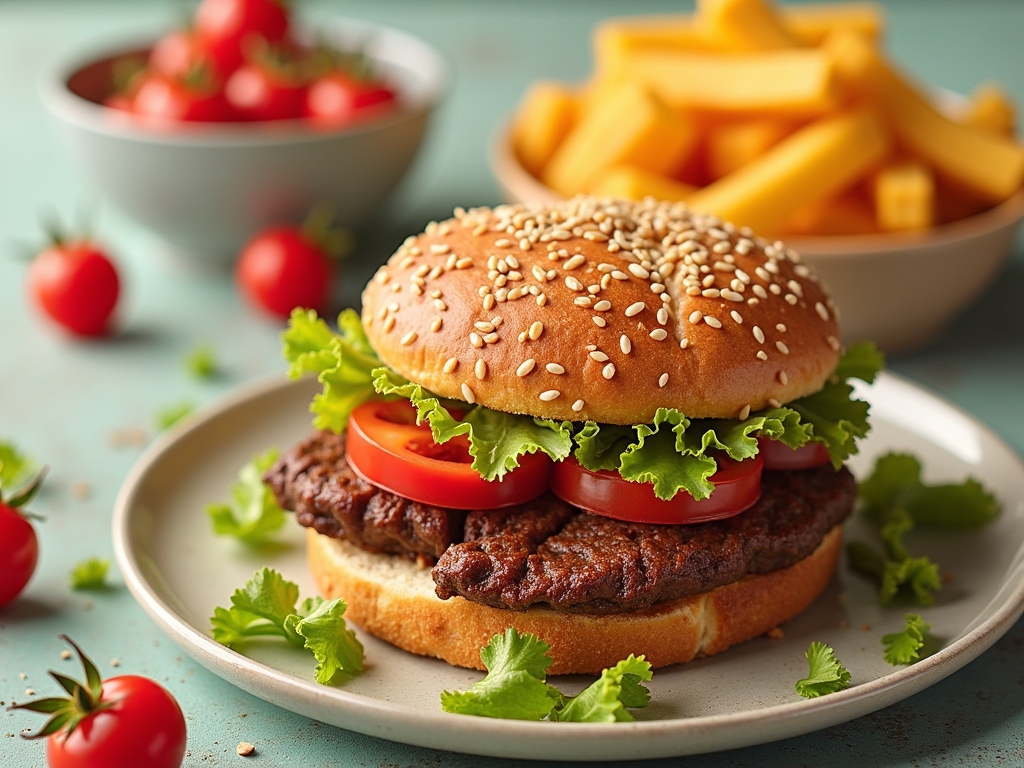Embarking on a ketogenic journey can be both exciting and daunting, especially if you’re a beginner. A keto foods diet focuses on low-carb, high-fat foods to help you achieve ketosis, a metabolic state that burns fat for fuel instead of carbohydrates.
Knowing what foods align with your goals and which ones to avoid is crucial to succeed in this lifestyle. In this guide, we’ll explore the ultimate list of keto-friendly foods and those you should steer clear of, ensuring your dietary choices propel you towards your keto success story.

The Basics of Keto: Understanding Keto Macros
Welcome to the world of keto macros, where each bite is a carefully calculated masterpiece! Forget counting sheeps; talk about counting carbs, fats, and proteins. When diving into the keto lifestyle, understanding macros (keto foods) is like having a GPS for your nutritional journey.
What Are Keto Macros?
The term “keto macros” refers to the distribution of calories from macronutrients in your diet. The ketogenic diet typically follows this ratio:
- 70-80% of calories from fats
- 15-20% of calories from protein
- 5-10% of calories from carbohydrates
This high-fat, low-carb approach helps your body enter ketosis, a metabolic state where fat becomes the primary energy source. Imagine your body burning fat for fuel—it’s like having a perpetual bonfire without the marshmallows (not keto foods)!
Why Are Macros Important?
Properly managing your keto foods ensures you remain in ketosis and continue to reap the benefits. It’s like maintaining a delicate balance on a tightrope—one wrong step (or snack) could send you tumbling back into carb-heavy oblivion.
“According to a study in the American Journal of Clinical Nutrition, the ketogenic diet can improve insulin sensitivity by 75%.”
This highlights how sticking to your keto foods can have significant health benefits beyond weight loss, including better blood sugar control.
Keto Macro Breakdown: A Practical Example
Imagine if you need 2000 calories a day. The breakdown would look something like this:
- Fats: 1550 calories (approximately 172 grams)
- Proteins: 300 calories (approximately 75 grams)
- Carbs: 150 calories (approximately 37 grams)
This macro allocation will keep you on track in your ketogenic journey, ensuring that you’re fueling up with foods that compliment this lifestyle, like avocados, nuts, and cheese. And yes, we know you’re wondering—avocado toast is still possible with some creativity!

Tweaking Your keto foods: Personalization is Key!
No two keto journeys are identical. Factors such as age, activity level, and metabolic rate all play roles in determining your ideal macro ratio. Experimentation is encouraged—just remember to keep those carbs low to stay in ketosis.
If you’re new or looking for more advice on maximizing your keto meal plan, check out our tips for creating delicious meals without sacrificing taste. For instance, try our scrumptious take on keto steak fries.
Diving into the world of keto macros might sound daunting at first, but with practice and patience—and perhaps some support from our ever-growing keto community, you’ll find it’s not just about cutting carbs but transforming how you view food entirely. “`
Foods You Can Eat on a Keto Diet
Ah, the Keto Diet. As you embark on this transformative journey, you might be wondering, “What CAN I eat?” Fear not, fellow keto traveler, for the list is as delightful as it is diverse. Let’s dive into a smorgasbord of keto-friendly foods that will make your taste buds tango!
Meat & Seafood
- Beef: A staple in any keto meal plan. Think ribeye steaks or ground beef for burgers.
- Poultry: Chicken and turkey are excellent protein sources while keeping carbs low.
- Fish: Salmon and sardines packed with Omega-3s not only boost heart health but also up your fat intake.
- Shrimp & Lobster: Fancy a seafood feast? These are your go-to crustaceans.
Dairy & Eggs
- Cheese: From cheddar to mozzarella, cheese is both delicious keto foods and carb-conscious.
- Butter & Cream: These high-fat options are perfect for cooking and adding richness to dishes.
- Eggs: Versatile and nutritious. Scrambled, boiled, or as an omelet—eggs fit seamlessly into any ketogenic meal prep.
Vegetables (Non-Starchy)
Avoid the starchy pitfalls! Stick to these veggies:
- Leafy Greens: Spinach, kale, and arugula are keto heroes!
- Zucchini & Cauliflower: Perfect for substituting pasta or rice in low-carb meal ideas.
- Bell Peppers & Broccoli: Add color and crunch to your keto foods plate without the guilt.
Nuts & Seeds
- Almonds & Walnuts: Snack away with these crunchy delights!
- Chia Seeds: Great for making keto-friendly puddings bursting with fiber.
“The ketogenic diet can lead to a 12% increase in HDL cholesterol.” — Source: Nutrition & Metabolism
The beauty of the ketogenic lifestyle is that it doesn’t skimp on flavor. With these foods on your grocery list, you’re set to whip up scrumptious dishes like our Keto Steak Fries. Bon appétit!
If you’re new to this high-fat diet, don’t worry—embracing these keto foods will help keep you energized and satisfied on your path to achieving that coveted ketosis process. Stay tuned as we explore more about what not to eat (hint: sugar’s evil twin) in the next section! “`
Keto Foods with Caution
Embarking on the keto diet journey can feel like stepping onto a culinary tightrope. While there are plenty of keto foods that support your low-carb, high-fat lifestyle, some require a little more vigilance. So, let’s put our caution caps on and navigate through some keto foods that might be sneaking in too many carbs or unhealthy fats.
Nuts and Seeds
Nuts and seeds are often hailed as the perfect keto snack due to their high fat content. However, beware! Some varieties pack more carbs than you might expect. Here’s how they stack up:
- Almonds: 6g of carbs per ounce – right on the edge!
- Pistachios: 8g of carbs per ounce – proceed with caution.
- Pecans: A safer bet with around 4g of carbs per ounce.
The trick is moderation. Enjoy them sparingly to avoid a carb overload while basking in their nutty goodness.
Dairy Products
Dairy is one of those categories that can both champion your ketogenic lifestyle or derail it altogether. Full-fat options like cheese and cream can be great allies, but watch out for these dairy saboteurs:
- Milk: A single cup contains about 12g of carbs. Yikes!
- Flavored Yogurts: Often sweetened and could nudge you over your carb limit.
If craving something creamy without the carb catastrophe, try unsweetened almond milk or full-fat Greek yogurt in controlled portions.
Sugar Alcohols
Sugar alcohols are often found in sugar-free products and can be a sweet partner in your keto journey. However, not all sugar alcohols are created equal.
“There is no evidence that natural sweeteners increase blood glucose levels significantly in diabetes patients.” – Diabetes Therapy Journal
- Erythritol: The safest bet with almost zero impact on blood sugar.
- Maltitol: Can spike blood sugar similar to regular sugar – proceed carefully!
The bottom line? Be an informed shopper and dive into labels before diving into these products.
The key to a successful keto experience is knowledge coupled with mindfulness. By considering these foods, you’ll find yourself more adept at confidently and precisely navigating the tantalizing world of keto food choices.

Foods to Avoid on a Keto Diet
Embarking on your keto journey can feel like navigating a culinary minefield. While the promise of bacon and cheese can make your taste buds dance, understanding what to avoid is equally crucial for achieving keto success.
Sugar and High-Carb Culprits
- Sugary Foods: This includes candies, cakes, and cookies. Yes, even those “sugar-free” ones often sneak in carbs through sugar alcohols!
- Starches: Bread, pasta, rice, and potatoes are the holy grail of carbs—steer clear! For bread aficionados, explore our keto bread alternatives.
- High-Carb Fruits: Bananas may be nature’s candy bar, but they’re not keto-friendly. Opt instead for berries sparingly.
Beverages That Betray
- Soda and Juice: These beverages are like liquid sugar bombs. Even fruit juices often masquerade as healthy but pack a sugary punch!
- Certain Alcohols: Beer lovers, brace yourselves. Beer is notoriously high in carbs. Stick to spirits or dry wines if you must imbibe.
Avoiding Processed Temptations
- Processed Foods: Pre-packaged meals may be convenient, but they often contain hidden sugars and carbs. Always check the labels!
- Margarine and Trans Fats: While you’re embracing fats on a keto diet, make sure they’re the good kind—olive oil over margarine any day.
If you feel like your brain is short-circuiting at all these “nos,” take heart—you’re likely tapping into those neuroprotective effects of keto as suggested by research published in Frontiers in Neuroscience. So while your neurons are doing their happy dance, keep these forbidden foods at bay.
“The ketogenic diet may have neuroprotective effects and improve cognitive function.” – Frontiers in Neuroscience
Navigating what not to eat on a low-carb, high-fat regimen can be challenging but rewarding. Remember: each avoided slice of pizza is one step closer to transforming health with this powerful dietary approach.

Keto Diet Tips for Beginners
Embarking on your keto journey can feel like entering a mystical realm where carbs are the villain, and fats are your magical friends. But fret not, intrepid adventurer! Here are some essential tips to help you navigate the ketogenic landscape with confidence and maybe even a little flair.
1. Understand Your keto foods
On the keto diet, macronutrient balance is crucial. Aim for approximately:
- 70-75% of your daily calories from fat
- 20-25% from protein
- 5-10% from carbohydrates
This balance helps keep your body in ketosis, a metabolic state in which it burns fat instead of carbs for energy. Consider using apps like MyFitnessPal or Carb Manager to track these macros easily.
2. Stock Up on Keto foods Staples
A well-prepared kitchen is a keto enthusiast’s secret weapon. Make sure you have these low-carb high-fat foods on hand:
- Avocados
- Nuts and seeds like almonds and chia seeds
- Coconut oil and olive oil
- Keto-friendly breads: Check out our delicious low-carb bread recipe.
- Cream cheese and other high-fat dairy products (if you’re not lactose intolerant!)
3. Hydrate Like a Pro (Seriously!)
Keto can be dehydrating, so make sure to drink plenty of water throughout the day. Consider adding electrolytes; they help mitigate symptoms of the notorious ‘keto flu’—that awkward phase when your body adjusts to burning fat.
4. Plan Meals Ahead
“Failing to plan is planning to fail.” – Alan Lakein (And he probably knew nothing about keto foods!)
A structured keto meal plan can prevent those pesky carb cravings from derailing your efforts. Meal prep on weekends or whenever you have time can save you headaches during busy weekdays.
5. Be Patient with Yourself
The transition to a ketogenic diet isn’t always seamless. A study published in the journal Nutrition & Diabetes revealed that adopting this lifestyle can lead to significant health benefits, including a potential reduction in waist circumference by up to 16%. Yet, results take time, so be patient with yourself as you adjust.
Dive into the keto community online or locally for support and inspiration. Nothing says solidarity like sharing keto success stories over a bowl of cauliflower rice!
If you’re eager for more actionable tips on transforming your health with the keto lifestyle, check out our detailed guide here.

The Benefits of Sticking to Keto Foods
Embracing the keto foods diet isn’t just about saying goodbye to carbs; it’s about welcoming a whole new world of health benefits. When you focus on keto-friendly foods, you’re fueling your body with high-quality fats and proteins and setting the stage for a transformative health journey.
1. Enhanced Weight Loss
One of the most celebrated benefits of a ketogenic lifestyle is its impact on weight loss. By reducing carbohydrate intake, your body enters a state of ketosis, where fat becomes the primary fuel source.
According to a study published in the Journal of Clinical Investigation, individuals on a low-carb, high-fat diet experienced significant reductions in body weight compared to those on low-fat diets. The secret weapon here? Ketones! These nifty little molecules are like fat-burning elves working tirelessly behind the scenes.
2. Improved Mental Clarity and Focus
If you’ve ever felt like your brain was running on fumes by mid-afternoon, switching to keto-friendly foods might be your ticket to powering through with mental clarity. The brain loves ketones as they provide an efficient and stable energy source compared to glucose.
Research indicates that individuals following a ketogenic diet often report increased focus and cognitive performance (NCBI). So next time you forget where you left your keys, remember it might be time for some keto bread instead!
3. Stabilized Blood Sugar Levels
For many people, especially those managing diabetes, maintaining stable blood sugar levels is crucial. A well-structured ketogenic meal plan can help reduce blood glucose levels significantly. An article from the American Diabetes Association mentions that low-carb diets can lead to improved insulin sensitivity and glycemic control (Diabetes Care Journal).
So not only does going low-carb with keto foods have potential for weight control, but it also turns out to be quite the superhero for your blood sugar too.
4. Better Heart Health
You might wonder how consuming more fat helps heart health—sounds counterintuitive, right? However, studies have shown that ketogenic diets can improve cardiovascular risk factors such as HDL cholesterol (the good kind) without adversely affecting LDL cholesterol (Nature Reviews Cardiology). It’s like giving your heart its very own personal trainer!
“Transforming one’s dietary habits by focusing on keto-friendly foods is more than just a change; it’s a lifestyle choice that comes with myriad health advantages.” — PLM Alchemy Lab Expert (me :))
If you’re ready to explore these benefits firsthand, check out how you can transform your health with the keto lifestyle at PLM Alchemy Lab: Transform Your Health With The Keto Lifestyle | PLM Alchemy Lab.
Remember, folks, sticking with keto foods isn’t simply about fitting into those jeans from five years ago—it’s about enhancing overall wellness and feeling fantastic while doing so!
Your dedication will yield numerous health benefits, including improved mental clarity and potential support for heart health when combined with regular exercise. For those with diabetes or thyroid concerns, consult with healthcare professionals about integrating the diet seamlessly into your lifestyle without compromising health factors.

Leave a Reply